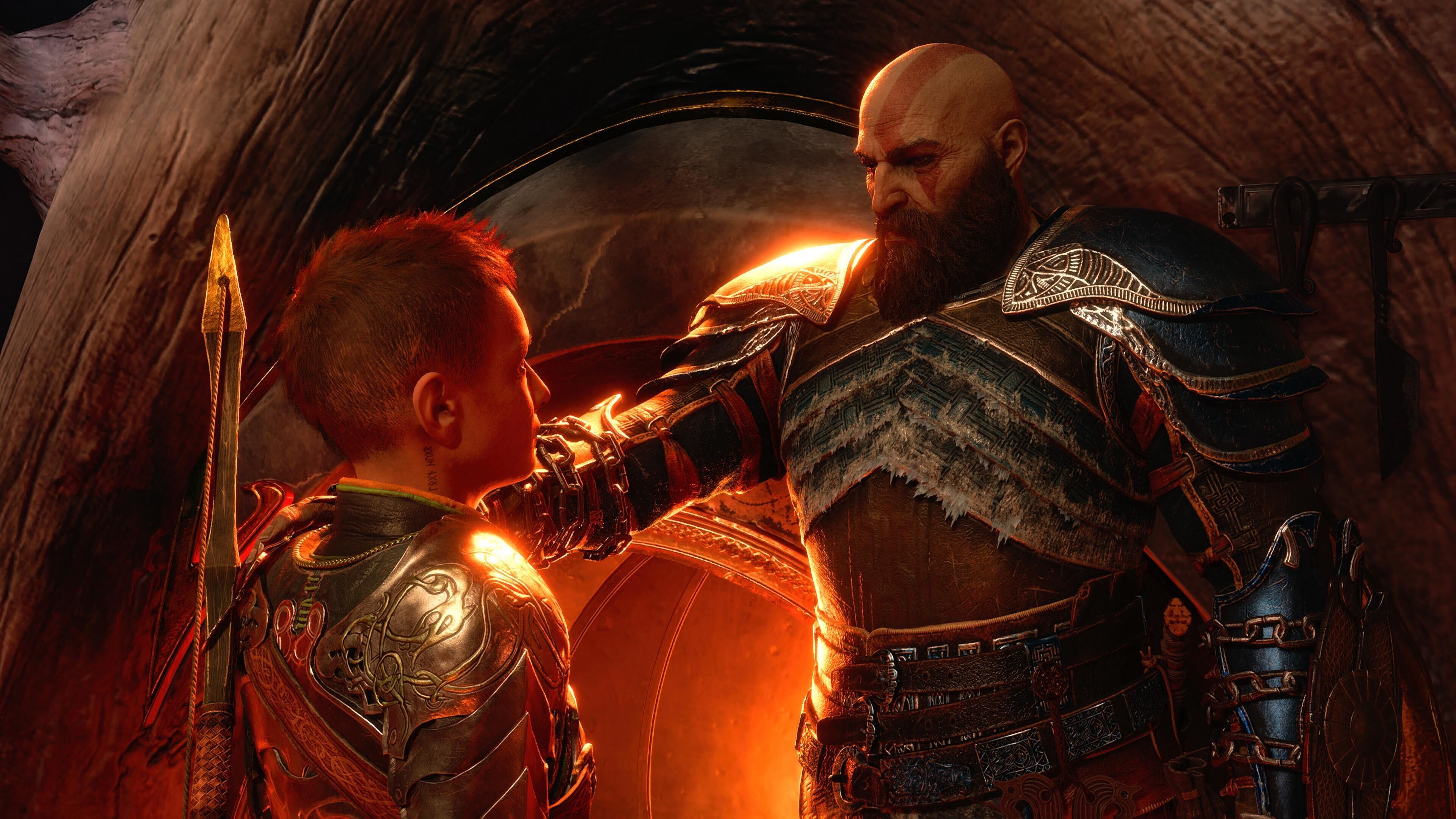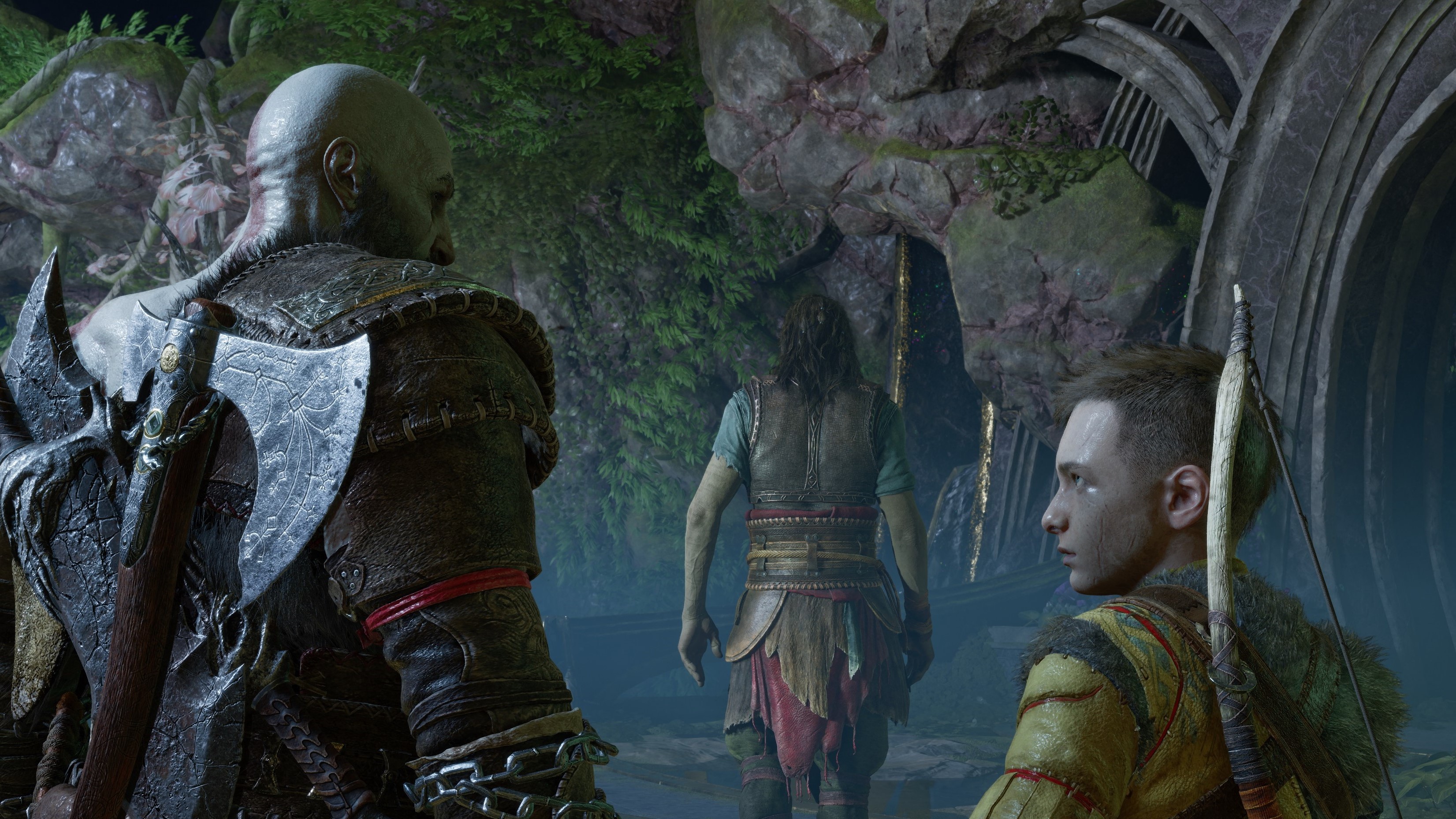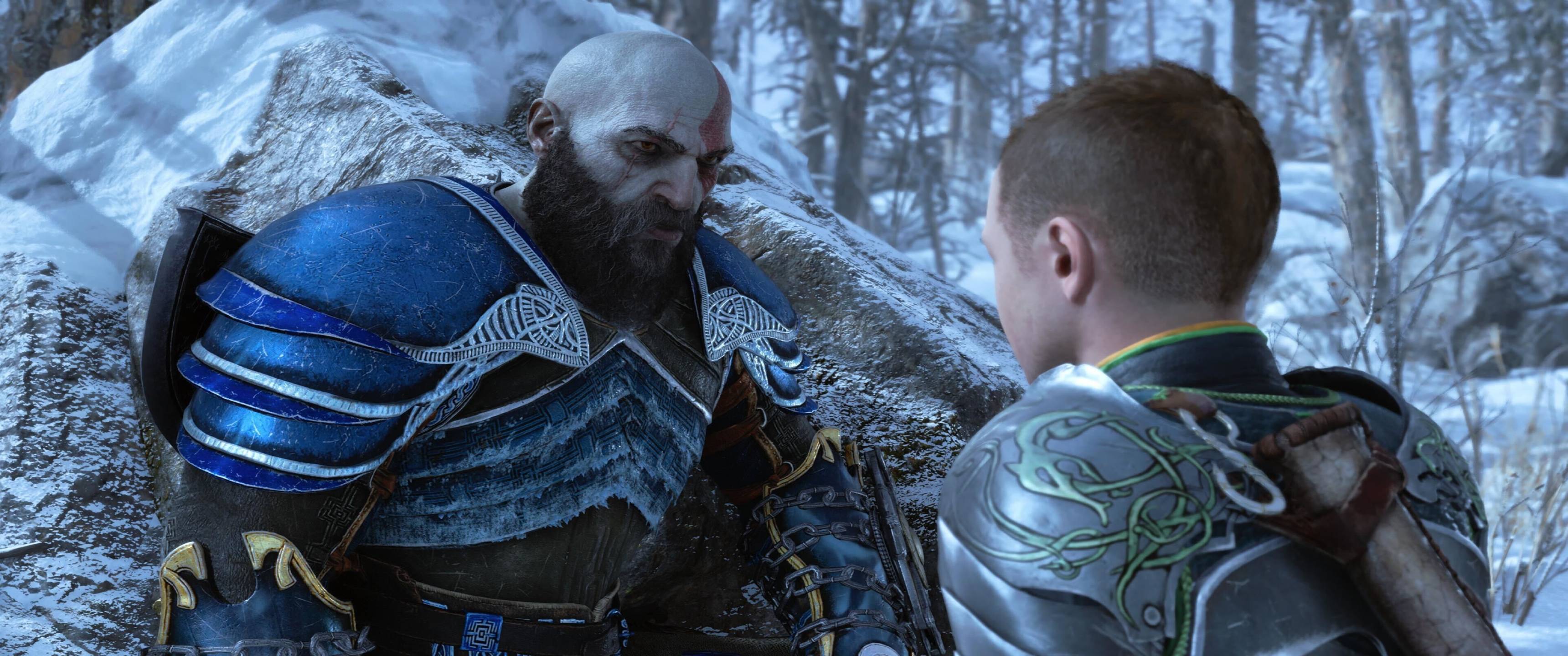TechRadar Verdict
Building upon the themes of its predecessor, God of War Ragnarok’s emotive narrative shines in its subtler moments, while clever evolutions to combat introduce welcome changes that advance gameplay without oversaturating it. It’s a sequel that is often as brutal as it is poignant – and a fitting next chapter in Kratos and Atreus’ journey.
Pros
- +
Perfectly pitched ambition
- +
Plenty to explore and collect
- +
Clever developments to combat
- +
Nuanced, emotive storytelling
Cons
- -
Traveling between realms is slow
Why you can trust TechRadar
God of War Ragnarok is a masterclass in perfectly pitched ambition. The highly anticipated sequel to 2018’s God of War takes the threads from its predecessor and weaves them into a layered tapestry of emotive storytelling and brutality befitting the next chapter of Kratos and Atreus’ journey.
But it’s in its subtleties that Ragnarok truly shines. Whether it’s in the subtext that’s carefully laid throughout the narrative like breadcrumbs or the understated, but welcome, advancements to combat and gameplay, Ragnarok proves that a sequel doesn’t need to be excessive to be compelling.
God of War Ragnarok firmly embedded its blades into me, leaving me enraptured from start to finish and desperate to talk about when it ended – and probably for some time to come.
Fire and ice

God of War Ragnarok picks up several years after the events of its predecessor. Where Fimbulwinter’s icy grasp was creeping in at the end of God of War, now it has firmly taken hold of Midgard, leaving a blanket of heavy snow draped across Kratos and Atreus’ home realm. This harsh winter forbodes the coming of Ragnarok, a great battle that is prophesized to bring about the destruction of the Nine Realms.
But it’s not just Midgard that has changed since God of War. Atreus is now a teenager, more self-sufficient and confident than he was as the boy we knew. Kratos, too, is more trusting of his half-giant son, though he has ramped up Atreus’ training in recent years in preparation for the prophesized war of the realms. As with all teenagers, however, Atreus is on a mission to explore his identity. In particular, how his role as Loki of the Giants fits into it. In his search, he comes across a prophecy that could tilt the outcome of the looming Ragnarok in their favor. With the wise-cracking Mimir at Kratos’ hip, and his father’s newfound trust putting fuel in Atreus’ belly, they begin a journey that will put their relationship to the ultimate test.
Ragnarok builds on the narrative foundations laid by God of War with finesse, capturing the intricacies of the (often turbulent) relationships between parents and children and the struggle of finding your own place in the world. It never batters you over the head with its themes, however, instead giving them room to breathe throughout the course of the game’s roughly 25+ hour main story path before building to an epic conclusion that is the culmination of every sprinkled breadcrumb along the way.
Draugr demolishing duo

It’s not simply in the narrative that Kratos and Atreus’ relationship is reflected, it’s in the gameplay and combat too. In Ragnarok, the father and son are partners. Throughout their journey, Atreus’ input is critical. Kratos will require him to shoot a runic arrow at a particularly dense bush concealing a chest, for example, so that the Spartan can then sink his Blades of Chaos into the runic-enhancing purple ring it leaves, burning away the troublesome foliage.
Sign up for breaking news, reviews, opinion, top tech deals, and more.
In battle, while Atreus will get stuck into Draugrs and Hel-Walkers by himself, you can also command him to shoot arrows at specific enemies and even have him unleash animal-related special abilities, such as summoning a rampaging Ibex to thrash through enemies. If you’re lucky, the long-horned goat will stun an enemy, allowing you to unleash a devastating attack that sees you tear off one of their limbs.
Both Atreus and Kratos have a range of new abilities, and their skill trees feel thoroughly fleshed out. The demi-god teenager no longer feels like an add-on, he has a wide range of skills at his disposal. Likewise, Kratos' skill trees for his Blades of Chaos and Leviathan Axe have been expanded, though there is no longer a skill tree available for his shield.
Evolution

The removal of the shield skill tree is an example of Sony Santa Monica elegantly streamlining God of War’s systems. Sequels can often become overwhelmed with new systems and features, but God of War Ragnarok’s feel like an organic evolution of what came before.
For example, Ragnarok introduces the Amulet of Yggdrasil to Kratos’ arsenal, which can hold up to nine different enchantments, each offering a different type of buff. While some improve the Spartan's runic abilities, others may improve stats like vitality, it’s up to you what you slot in. With so many slots, you can construct starkly different builds to fit your combat style. This seemingly replaces the armor runes feature from the previous game, which is no longer available but is quickly forgotten thanks to the new system.
This doesn’t mean that weapon runes have been disposed of. All weapons and armor can still be upgraded by the dwarves Brok and Sindri, and you can add an attachment to each weapon as well as separate runes for a light and heavy runic attack – all of which are upgradeable, too. Atreus doesn’t get access to these runes, and his armor choice is solely cosmetic, but he does have his own buffs in the form of accessories, which allow you to hone his playstyle more to your own.
That really seems to be the purpose of these evolutions: to carve out your Kratos and Atreus. Every player is given the same weapons, but it’s the enchantments, runes, and accessories that hold the nuance. I just wish that traveling between realms had been given the same treatment. Unfortunately, running along the path between the realms remains irritating as it slows the game’s pace and almost feels like a hidden loading screen – not even the chit chats between characters can make it more tolerable.
House of Axe

God of War Ragnarok made me laugh, smile, and cry – the latter was especially true when I encountered two game-breaking bugs during my playthrough (which Sony has since addressed in a chunky pre-launch patch).
Ragnarok wouldn’t have had this effect on me had it not been for how its predecessor painted the relationship between Kratos and Atreus. After journeying to the highest point in the Nine Realms with the pair, I’m absorbed in them, oftentimes recognizing my own teenage frustrations in Atreus, yet being old enough to relate with Kratos’ fears for his son.
Sony Santa Monica had its own peak to climb in making the sequel to one of PlayStation’s most revered releases. Fortunately, smart decisions, riveting characters, and subtle but discernible improvements make for an almost perfect sequel.
With God of War Ragnarok, Sony Santa Monica seamlessly weaves together the brutality of the original series with the emotive threads spun by its own revival. It’s done so beautifully, never letting ambition exceed the needs of its story – and what a story it is. God of War Ragnarok is a fitting end to the series’ Norse saga and one I’ll be thinking about for some time.
Since our review of Ragnarok, we have thoroughly enjoyed playing the game on PS5 Pro, where the power of Sony's premium console and its PSSR tech allow players to have the best of both performance and quality worlds at the same time. As a result, we rank it as one of the best PS5 Pro games going right now.
An award-winning games journalist, with seven years of experience in games journalism and a degree in journalism from City University, London, Vic brings experience from IGN, Eurogamer, The Telegraph, VG247, Dot Esports and more to the TechRadar table. You may have even heard her on the radio or speaking on a panel, as she’s previously appeared on BBC Radio 4, BBC Radio 5, BBC Radio Ulster and more. Not only is Vic passionate about games, but she's appeared on both panels and podcasts to discuss mental health awareness. Make sure to follow her on Twitter for more.
